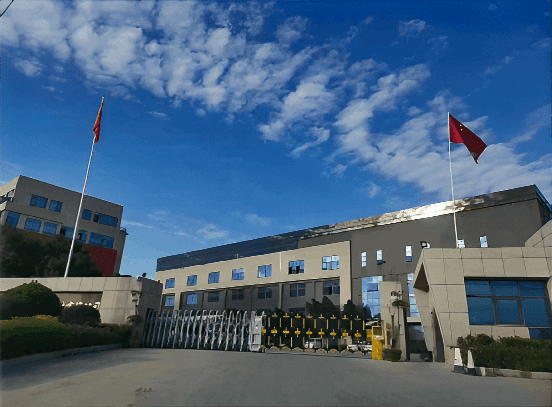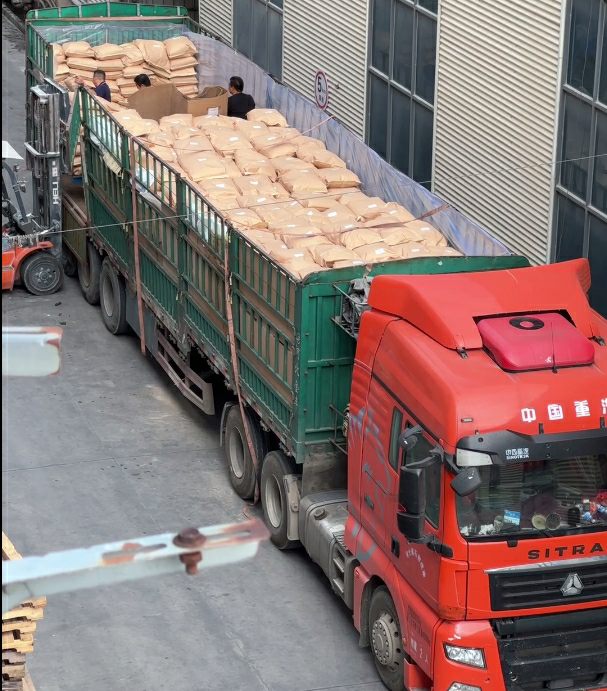In today’s rapidly evolving materials industry, thermoplastic elastomers (TPE) and thermoplastic vulcanizates (TPV) are two of the most talked-about polymers. Although they both come under the umbrella of elastomeric materials, there are significant differences in their composition, properties, and applications. In this comprehensive blog post, we’ll delve into the unique characteristics of TPE vs. TPV, explore their respective advantages, and provide insights into how TPE material and TPV material are used in different industries. We’ll also discuss the role of TPE factories, TPE manufacturers, TPV factories, and TPV manufacturers in bringing these materials to market. By the end, you will have a clear understanding of the difference between TPE and TPV, helping you make informed decisions when selecting materials for specific product requirements.
- Understanding the Basics of TPE
1.1 What Is TPE?
TPE stands for Thermoplastic Elastomer. As the name suggests, it is a class of polymeric materials that combine the elastic properties of rubber with the processability of plastics. In simpler terms, TPE can be heated and molded like plastic while maintaining some of the flexible, rubbery features associated with conventional elastomers. This makes it highly versatile for a wide range of industrial applications.
Key Characteristics of TPE:
Thermoplastic nature: Can be melted and remolded repeatedly without significant loss of properties.
Rubber-like flexibility: Offers a soft-touch feel and excellent elasticity.
Versatile processing: Compatible with common manufacturing methods like injection molding, extrusion, and blow molding.
Recyclable: Because of the thermoplastic characteristic, scrap or leftover TPE material can be reprocessed, making it more eco-friendly compared to traditional thermoset rubbers.
1.2 TPE Material Compositions
TPE material is generally composed of a hard thermoplastic phase (commonly polypropylene, polystyrene, or polyamide) and a soft elastomeric phase (often made from EPDM, SBS, SEBS, or other rubber-like polymers). The final product retains the best of both worlds: the strength and durability of a plastic with the soft elasticity of rubber.
The proportions of these components can be tweaked to create different grades of TPE, each suitable for specific end-use requirements. In many industries, the focus is on achieving the right balance between flexibility, toughness, heat resistance, and cost-effectiveness.

1.3 TPE Manufacturers and TPE Factories
Globally, there are numerous TPE manufacturers and TPE factories dedicated to producing high-quality TPE material. These facilities often specialize in formulating custom TPE compounds to meet stringent requirements in automotive, consumer goods, medical, and industrial applications. From automotive seals to toothbrush grips, TPE’s versatile nature allows manufacturers to cater to diverse market needs.
Key factors that differentiate one TPE factory from another include:
R&D capabilities: A strong research and development team can innovate new grades or formulations of TPE material.
Quality control: Ensuring consistent properties across batches is crucial for industries with strict standards.
Sustainability practices: An increasing number of TPE manufacturers are focusing on eco-friendly production methods, such as using recycled content or adopting green energy practices.
- Diving Deep into TPV
2.1 What Is TPV?
TPV stands for Thermoplastic Vulcanizate, a subcategory of thermoplastic elastomers. It is typically produced by dynamically vulcanizing rubber particles (often EPDM rubber) within a thermoplastic matrix (commonly polypropylene). The key difference between TPV and many standard TPEs is the vulcanization process, which results in a cross-linked rubber phase. This cross-linking dramatically improves the material’s resistance to compression set, heat, and various chemicals.
Key Characteristics of TPV:
Superior heat resistance: The cross-linked rubber phase grants better high-temperature performance.
Enhanced chemical and oil resistance: TPV generally outperforms basic TPEs in harsh chemical environments.
Good compressive strength: Offers strong shape retention, making it ideal for gaskets and seals.
Thermoplastic processability: Despite having a rubbery phase, TPV can still be processed using standard thermoplastic methods like injection molding and extrusion.
2.2 TPV Material Formulations
A TPV material usually consists of a polypropylene matrix and cross-linked EPDM rubber. During manufacturing, the rubber is partially vulcanized while being mixed with the thermoplastic, creating a two-phase system where finely dispersed cross-linked rubber particles are embedded within the thermoplastic. This structure provides a unique combination of rubber-like performance with the processing convenience of a plastic.
2.3 TPV Manufacturers and TPV Factories
Just like TPE, there are specialized TPV manufacturers and TPV factories worldwide. These facilities focus on maintaining a tightly controlled dynamic vulcanization process to ensure consistent product performance. TPV factories typically handle formulations designed for specific industries, such as automotive weather seals, appliance components, and industrial gaskets.
When selecting a TPV manufacturer, crucial considerations include:
Expertise in dynamic vulcanization: The process is more complex compared to typical TPE compounding, requiring precise control to achieve the desired level of cross-linking.
Track record of consistency: Variations in cross-link density can lead to performance discrepancies. A reliable TPV factory ensures minimal batch-to-batch variations.
Global support: Many TPV manufacturers cater to multinational clients, providing localized technical service and support.
- TPE vs. TPV: Core Differences
3.1 Composition and Structure
TPE: Comprised of a thermoplastic phase and an elastomeric phase that are not chemically cross-linked. This results in a softer, more flexible material compared to thermoset rubbers.
TPV: Involves a dynamically vulcanized rubber phase dispersed in a thermoplastic matrix. The rubber particles are partially or fully cross-linked, leading to enhanced temperature and chemical resistance.
3.2 Mechanical Properties
Temperature Resistance: TPV generally exhibits better high-temperature resistance due to cross-linking, making it suitable for engine components and under-the-hood automotive parts. TPE, while still offering decent heat tolerance, may deform if exposed to higher temperatures for extended periods.
Compression Set: TPV often boasts a lower compression set, meaning it retains its shape better under compression. This trait is vital in sealing applications, where maintaining a tight seal is crucial.
Soft Touch and Flexibility: TPE typically offers a “softer” touch and can be formulated to have very low hardness levels (Shore A). Although TPV can also achieve similar softness levels, it is generally slightly firmer because of the cross-linked phase.
3.3 Chemical Resistance
TPE: Provides decent resistance to water and some chemicals but may be outperformed by TPV in environments with strong oils or harsh chemicals.
TPV: Often chosen for applications requiring exposure to automotive fluids, fuels, or other aggressive substances, thanks to its cross-linked rubber component.
3.4 Processing and Recyclability
TPE: Simple to process using standard thermoplastic methods; it can be re-melted and reprocessed multiple times with minimal degradation.
TPV: Although also thermoplastic, the presence of cross-linked rubber may slightly complicate processing compared to TPE. However, TPV still remains more recyclable than traditional thermoset rubbers.
3.5 Cost Considerations
TPE: Generally more cost-effective, especially for lower-performance applications where extreme temperature or chemical resistance is not mandatory.
TPV: Commands a higher price due to the additional vulcanization step and superior performance characteristics. However, for demanding applications, TPV often proves more cost-efficient over the long term due to extended product life and reduced maintenance. - Typical Applications of TPE and TPV
4.1 Where TPE Material Excels
Consumer Goods: TPE is widely used in soft-touch grips (e.g., toothbrushes, razors), household items, and wearable components.
Medical Devices: Because of its skin-friendly nature and the possibility of sterilization, certain TPE grades are used in medical tubing, syringe plungers, and other healthcare products.
Sports Equipment: TPE finds its way into protective gear, handles, and athletic shoe components due to its shock absorption and flexibility.
Electronics: Cable jacketing, flexible phone cases, and protective grommets often utilize TPE.
4.2 Where TPV Material Is Preferable
Automotive Industry: From weather seals to under-the-hood components, TPV’s excellent heat and chemical resistance make it indispensable in vehicles.
Industrial Gaskets and Seals: The ability to maintain shape under pressure and in harsh environments makes TPV a prime choice for industrial sealing applications.
Appliance Components: TPV is used in washers, dryers, and dishwashers, where exposure to heat and chemicals is common.
Outdoor Equipment: Because of its resistance to UV light, heat, and oxidation, TPV can be found in lawn and garden tools, outdoor power equipment, and various enclosures. - How TPE Factories and TPV Factories Operate
5.1 Production Processes
A TPE factory usually focuses on polymer blending. The thermoplastic (polypropylene, polystyrene, or others) is mixed with elastomeric materials (SBS, SEBS, or other rubber-like components) using specialized equipment like twin-screw extruders. The end product is pelletized TPE material ready for distribution or further processing.
A TPV factory, on the other hand, carries out a more complex process called dynamic vulcanization. This involves the simultaneous mixing and partial vulcanization of the rubber phase within a thermoplastic matrix. Managing parameters such as temperature, mixing speed, and the type/amount of cross-linking agents is critical to achieving desired TPV properties.
5.2 Quality Control and Testing
Both TPE and TPV manufacturers invest heavily in quality control. This typically includes testing for tensile strength, elongation at break, tear resistance, hardness (Shore A or D), and compression set. TPV factories also test the degree of cross-linking to ensure that the rubber phase is adequately vulcanized, guaranteeing consistent performance.
5.3 Collaboration with End Users
TPE and TPV manufacturers often collaborate closely with product designers, engineers, and material specialists to fine-tune formulations. This is especially true in industries with strict requirements, such as automotive or medical. Partnering with a reputable TPE manufacturer or TPV manufacturer ensures that the final product meets all performance, safety, and regulatory needs.
- Making the Right Material Choice
6.1 Application Requirements
When deciding between TPE material and TPV material, the first question should be: What does the application demand? If you need high-temperature stability, chemical resistance, and long-term durability, TPV is typically the better choice. On the other hand, if you prioritize a softer touch, flexible design, lower cost, or if the product doesn’t encounter extreme conditions, TPE may suffice.
6.2 Cost vs. Performance
Budget constraints often drive material selection. While TPE is generally less expensive, TPV may offer a better return on investment in specific high-performance applications due to lower replacement costs and longer service life. A thorough cost-benefit analysis—considering factors like product lifespan, warranty issues, and liability—is crucial.
6.3 Regulatory and Environmental Factors
For food contact applications or medical devices, certain TPE grades meet FDA or ISO standards. TPV also has grades that meet regulatory requirements, but your choice might hinge on compliance certifications. Additionally, if sustainability is a priority, both TPE and TPV can be recycled more easily than thermoset rubbers, though TPE often has a slight edge in recyclability.
- Future Trends and Innovations
7.1 Enhanced TPE Formulations
As more industries explore lightweight, flexible materials, TPE manufacturers are developing innovative formulations. These new TPE grades aim to offer improved weatherability, higher temperature tolerance, and superior bonding with other polymers. We can expect TPE factories to produce increasingly specialized compounds for niche markets like medical devices, wearables, and electronics.
7.2 Advanced TPV Applications
TPV manufacturers continue to refine dynamic vulcanization methods, focusing on improved cross-linking efficiency and the use of sustainable additives. As the automotive industry shifts toward electric vehicles, lighter and more efficient components are in high demand. TPV material is poised to play a larger role, especially in battery sealing and temperature-sensitive applications.
7.3 Sustainability Efforts
Environmental stewardship is a growing concern. Both TPE and TPV factories are innovating in terms of recycling and reuse of production scrap. Additionally, researchers are exploring bio-based feedstocks to replace petroleum-based components in TPE and TPV production, thereby reducing the carbon footprint.
Choosing between TPE and TPV boils down to understanding the specific requirements of your application. TPE is often praised for its soft-touch feel, ease of processing, and cost-effectiveness, making it ideal for consumer goods, medical devices, and various general-purpose applications. Meanwhile, TPV stands out with its robust temperature resistance, excellent chemical stability, and lower compression set, making it a staple in automotive, industrial, and high-performance environments.

Whether you’re an engineer in search of the perfect seal for an automotive engine or a product designer looking for a soft-touch grip for consumer electronics, both TPE material and TPV material provide a wealth of possibilities. The key is to partner with a reputable TPE manufacturer or TPV manufacturer—one that understands the intricacies of formulating polymers to meet exacting standards. By leveraging the expertise of a specialized TPE factory or TPV factory, you can ensure that your end products consistently deliver quality, durability, and performance.
In an era where sustainability and efficiency are paramount, thermoplastic elastomers (TPE) and thermoplastic vulcanizates (TPV) will continue to evolve. As global markets demand lighter, stronger, and greener materials, innovations in TPE and TPV technologies will likely keep pace. By staying informed about material developments and forging strong partnerships with TPE and TPV manufacturers, businesses can maintain a competitive edge in the marketplace.
In summary, the difference between TPE and TPV lies in the latter’s dynamic vulcanization process, which confers superior high-temperature and chemical resistance. However, TPE’s lower cost and softer feel make it an excellent choice for a variety of everyday applications. Understanding these nuances will allow designers, engineers, and sourcing professionals to make the best possible decisions for their products, balancing cost, performance, and sustainability in a rapidly changing world.
Key Takeaways
TPE (Thermoplastic Elastomer): Offers rubber-like flexibility with thermoplastic processing ease. Ideal for cost-sensitive and soft-touch applications.
TPV (Thermoplastic Vulcanizate): Dynamically vulcanized, providing improved heat and chemical resistance. Perfect for demanding environments like automotive and industrial.
Material Selection: Always consider application-specific factors such as temperature exposure, chemical environment, mechanical stress, and budget.
Role of Factories and Manufacturers: A reliable TPE manufacturer or TPV manufacturer ensures product consistency, while specialized TPE factories and TPV factories provide tailored solutions to meet diverse industry needs.
Future Outlook: Advances in TPE and TPV technology, along with sustainability efforts, will continue to expand their use across various sectors.
By comprehensively analyzing the properties and applications of TPE vs. TPV, stakeholders can optimize their product designs and streamline manufacturing processes. Whether you’re working with a TPE factory or a TPV factory, clear communication of performance goals, regulatory constraints, and sustainability objectives will ensure you get the right material for the job—and keep you at the forefront of innovation in the ever-evolving materials landscape.






